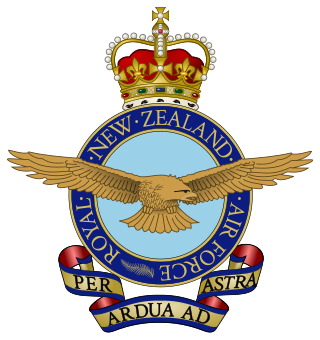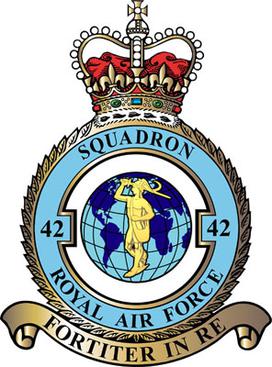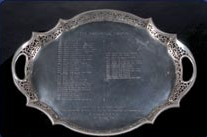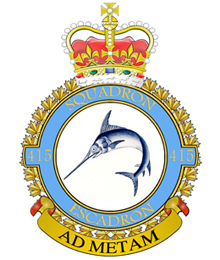
The Maintenance Trophy is awarded by Lockheed Martin and was introduced in 1996 at the Fincastle competition.

The Maintenance Trophy is awarded by Lockheed Martin and was introduced in 1996 at the Fincastle competition.
The Lockheed Martin Fincastle Maintenance Trophy was first introduced during Fincastle 1996, which was held in New Zealand. It was felt the competition would strengthen relations between the competing countries, allowing them to learn from each other as well as involving the maintenance teams in the competitive spirit of Fincastle . It is designed to foster relations among the four competing nations (RAF, RCAF, RNZAF and RAAF) and encourage learning and sharing skills in a competitive atmosphere.
The competition runs in parallel to and is intrinsically linked to the Fincastle Competition, which the aircrew compete for. The competition is judged by a team of Senior Non-Commissioned Officers SNCOs, one from each nation, led by an Engineering Officer from the host country. Teams are examined on their flight line operations, the quality of their support elements, engineering skills and a team interview.

The Curtiss P-40 Warhawk is an American single-engined, single-seat, all-metal fighter and ground-attack aircraft that first flew in 1938. The P-40 design was a modification of the previous Curtiss P-36 Hawk which reduced development time and enabled a rapid entry into production and operational service. The Warhawk was used by most Allied powers during World War II, and remained in frontline service until the end of the war. It was the third most-produced American fighter of World War II, after the P-51 and P-47; by November 1944, when production of the P-40 ceased, 13,738 had been built, all at Curtiss-Wright Corporation's main production facilities in Buffalo, New York.

The British Commonwealth Air Training Plan (BCATP), or Empire Air Training Scheme (EATS) often referred to as simply "The Plan", was a massive, joint military aircrew training program created by the United Kingdom, Canada, Australia and New Zealand, during the Second World War. BCATP remains one of the single largest aviation training programs in history and was responsible for training nearly half the pilots, navigators, bomb aimers, air gunners, wireless operators and flight engineers who served with the Royal Air Force (RAF), Royal Navy Fleet Air Arm (FAA), Royal Australian Air Force (RAAF), Royal Canadian Air Force (RCAF) and Royal New Zealand Air Force (RNZAF) during the war.

The Royal New Zealand Air Force is the aerial service branch of the New Zealand Defence Force. It was formed from New Zealand elements of the British Royal Air Force, becoming an independent force in 1923, although many RNZAF aircrew continued to serve in the Royal Air Force until the end of the 1940s.

Royal Air Force Kinloss or RAF Kinloss is a former Royal Air Force (RAF) station located near the village of Kinloss, on the Moray Firth in the north east of Scotland.

The Lockheed Hudson is a light bomber and coastal reconnaissance aircraft built by the American Lockheed Aircraft Corporation. It was initially put into service by the Royal Air Force shortly before the outbreak of the Second World War and primarily operated by it thereafter. The Hudson was a military conversion of the Model 14 Super Electra airliner, and was the first significant aircraft construction contract for Lockheed — the initial RAF order for 200 Hudsons far surpassed any previous order the company had received.

The Lockheed Ventura is a twin-engine medium bomber and patrol bomber of World War II.

Number 42 Squadron was a squadron of the Royal Air Force. It served during the First World War as an army co-operation squadron and during the Second World War in various roles. Between 1992 and 2010, it was the Operational Conversion Unit (OCU) for the Hawker Siddeley Nimrod MR.2, based at RAF Kinloss, Moray, until the Nimrod MR.2's retirement in March 2010. No. 42 Squadron disbanded on 26 May 2011.

The Tengah Air Base is a military airbase of the Republic of Singapore Air Force (RSAF) located in the Western Water Catchment, in the western part of Singapore.
No. 5 Squadron RNZAF is a maritime patrol and anti-submarine warfare squadron of the Royal New Zealand Air Force. It operates the Boeing P-8 Poseidon from RNZAF Base Ohakea. The squadron was formed during the Second World War and has since been in continuous operation. A number of maritime patrol aircraft have been operated by the squadron over the course of its existence including the Short Singapore, Consolidated PBY Catalina, Short Sunderland and the Lockheed P-3 Orion.

No. 40 Squadron RNZAF is a transport squadron in the Royal New Zealand Air Force (RNZAF). Established in June 1943, it remains on active duty.

No. 75 Squadron is a Royal Australian Air Force (RAAF) fighter unit based at RAAF Base Tindal in the Northern Territory. The squadron was formed in 1942 and saw extensive action in the South West Pacific theatre of World War II, operating P-40 Kittyhawks. It was disbanded in 1948, but reformed the following year and operated jet aircraft throughout the Cold War. The squadron was based at Malta from 1952 to 1954, flying de Havilland Vampires, and Malaysia from 1968 to 1983, with Dassault Mirage IIIs, before returning to Australia.

RMAF Butterworth is an active Air Force Station of the Royal Malaysian Air Force (RMAF) situated 4.5 nautical miles from Butterworth in Penang, Malaysia. It is currently home to the Headquarters Integrated Area Defence System (HQIADS), part of the Five Power Defence Arrangements (FPDA).

The International Fincastle Competition is a contest of skills between the air forces of the United Kingdom, Australia, Canada and New Zealand. During the competition, crews compete in anti-submarine warfare, anti-surface warfare, and intelligence and surveillance gathering.

Redhill Aerodrome is an operational general aviation aerodrome located 1.5 NM south-east of Redhill, Surrey, England, in green belt land.

Royal Air Force Calshot or more simply RAF Calshot was initially a seaplane and flying boat station, and latterly a Royal Air Force marine craft maintenance and training unit. It was located at the end of Calshot Spit in Southampton Water, Hampshire, England, at grid reference SU487024. It was the main seaplane/flying boat development and training unit in the UK, with the landing area sheltered by the mainland, to the west, north and east, and the Isle of Wight, a few miles away to the south on the other side of the Solent, where seaplanes and flying boats were mass-produced by Saunders-Roe. It closed in 1961. Much of the former base has been preserved, with most of the site now being occupied by the RNLI.
The Gloucester Cup is the common name for three awards of the Australian Defence Force officially called the Duke of Gloucester's Cup, the three awards are presented to the most proficient ship of the Royal Australian Navy (RAN), infantry battalion of the Australian Army, and squadron of the Royal Australian Air Force (RAAF) during the previous year. The awards were created by Prince Henry, Duke of Gloucester in 1946, while he was serving as the Governor-General of Australia, and were first presented in 1947.

Royal Air Force Thorney Island or more simply RAF Thorney Island is a former Royal Air Force station located on Thorney Island, West Sussex, England, 6.6 miles (10.6 km) west of Chichester and 7.1 miles (11.4 km) east of Portsmouth, Hampshire.

415 Long Range Patrol Force Development Squadron is an air squadron of the Royal Canadian Air Force that first saw service during the Second World War.
Neil Williams (1934–1977) was a Welsh aerobatics pilot.

Dassault Mirage III Australian procurement was a transaction between the French and Australian governments which led to the procurement of the French designed fixed wing jet aircraft, the Mirage III, for the Royal Australian Air Force (RAAF). In the late 1950s the Australian government announced its intention to modernize its air force with state of the art technology and the French manufacturing company Dassault won the bid over the American Lockheed when the Australian government agreed to buy over 100 Mirages at an estimated cost of AUS$193.7 million in the early 1960s.